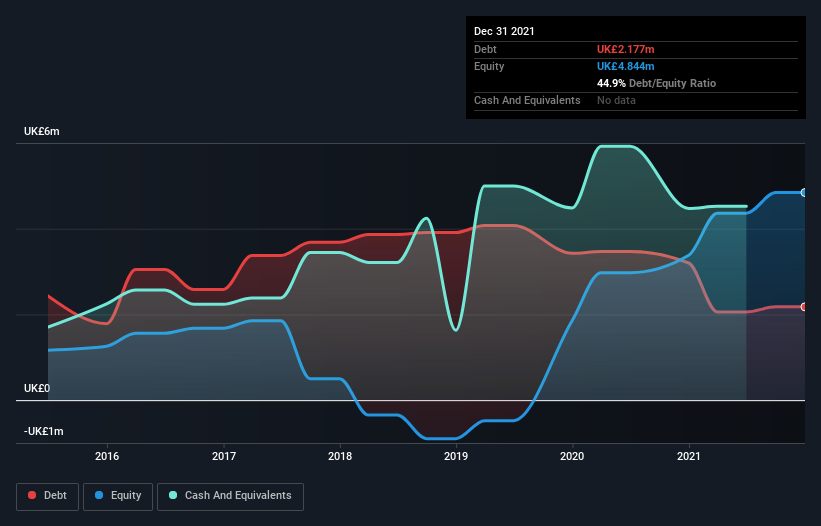These 4 Measures Indicate That MobilityOne (LON:MBO) Is Using Debt Reasonably Well
Howard Marks put it nicely when he said that, rather than worrying about share price volatility, 'The possibility of permanent loss is the risk I worry about... and every practical investor I know worries about.' When we think about how risky a company is, we always like to look at its use of debt, since debt overload can lead to ruin. We can see that MobilityOne Limited (LON:MBO) does use debt in its business. But is this debt a concern to shareholders?
When Is Debt A Problem?
Debt assists a business until the business has trouble paying it off, either with new capital or with free cash flow. Ultimately, if the company can't fulfill its legal obligations to repay debt, shareholders could walk away with nothing. However, a more usual (but still expensive) situation is where a company must dilute shareholders at a cheap share price simply to get debt under control. Of course, the upside of debt is that it often represents cheap capital, especially when it replaces dilution in a company with the ability to reinvest at high rates of return. The first thing to do when considering how much debt a business uses is to look at its cash and debt together.
Check out our latest analysis for MobilityOne
How Much Debt Does MobilityOne Carry?
You can click the graphic below for the historical numbers, but it shows that MobilityOne had UK£2.18m of debt in December 2021, down from UK£3.20m, one year before. However, it does have UK£4.52m in cash offsetting this, leading to net cash of UK£2.34m.
How Healthy Is MobilityOne's Balance Sheet?
The latest balance sheet data shows that MobilityOne had liabilities of UK£7.37m due within a year, and liabilities of UK£344.0k falling due after that. Offsetting these obligations, it had cash of UK£4.52m as well as receivables valued at UK£2.49m due within 12 months. So its liabilities total UK£700.4k more than the combination of its cash and short-term receivables.
Of course, MobilityOne has a market capitalization of UK£6.91m, so these liabilities are probably manageable. However, we do think it is worth keeping an eye on its balance sheet strength, as it may change over time. Despite its noteworthy liabilities, MobilityOne boasts net cash, so it's fair to say it does not have a heavy debt load!
On the other hand, MobilityOne's EBIT dived 13%, over the last year. If that rate of decline in earnings continues, the company could find itself in a tight spot. When analysing debt levels, the balance sheet is the obvious place to start. But you can't view debt in total isolation; since MobilityOne will need earnings to service that debt. So if you're keen to discover more about its earnings, it might be worth checking out this graph of its long term earnings trend.
Finally, a company can only pay off debt with cold hard cash, not accounting profits. MobilityOne may have net cash on the balance sheet, but it is still interesting to look at how well the business converts its earnings before interest and tax (EBIT) to free cash flow, because that will influence both its need for, and its capacity to manage debt. Over the most recent three years, MobilityOne recorded free cash flow worth 55% of its EBIT, which is around normal, given free cash flow excludes interest and tax. This free cash flow puts the company in a good position to pay down debt, when appropriate.
Summing up
Although MobilityOne's balance sheet isn't particularly strong, due to the total liabilities, it is clearly positive to see that it has net cash of UK£2.34m. So we are not troubled with MobilityOne's debt use. The balance sheet is clearly the area to focus on when you are analysing debt. But ultimately, every company can contain risks that exist outside of the balance sheet. Case in point: We've spotted 2 warning signs for MobilityOne you should be aware of, and 1 of them is significant.
Of course, if you're the type of investor who prefers buying stocks without the burden of debt, then don't hesitate to discover our exclusive list of net cash growth stocks, today.
Have feedback on this article? Concerned about the content? Get in touch with us directly. Alternatively, email editorial-team (at) simplywallst.com.
This article by Simply Wall St is general in nature. We provide commentary based on historical data and analyst forecasts only using an unbiased methodology and our articles are not intended to be financial advice. It does not constitute a recommendation to buy or sell any stock, and does not take account of your objectives, or your financial situation. We aim to bring you long-term focused analysis driven by fundamental data. Note that our analysis may not factor in the latest price-sensitive company announcements or qualitative material. Simply Wall St has no position in any stocks mentioned.

 Yahoo Finance
Yahoo Finance 
